7 Herbal Remedies to Get Rid of Pimples Forever
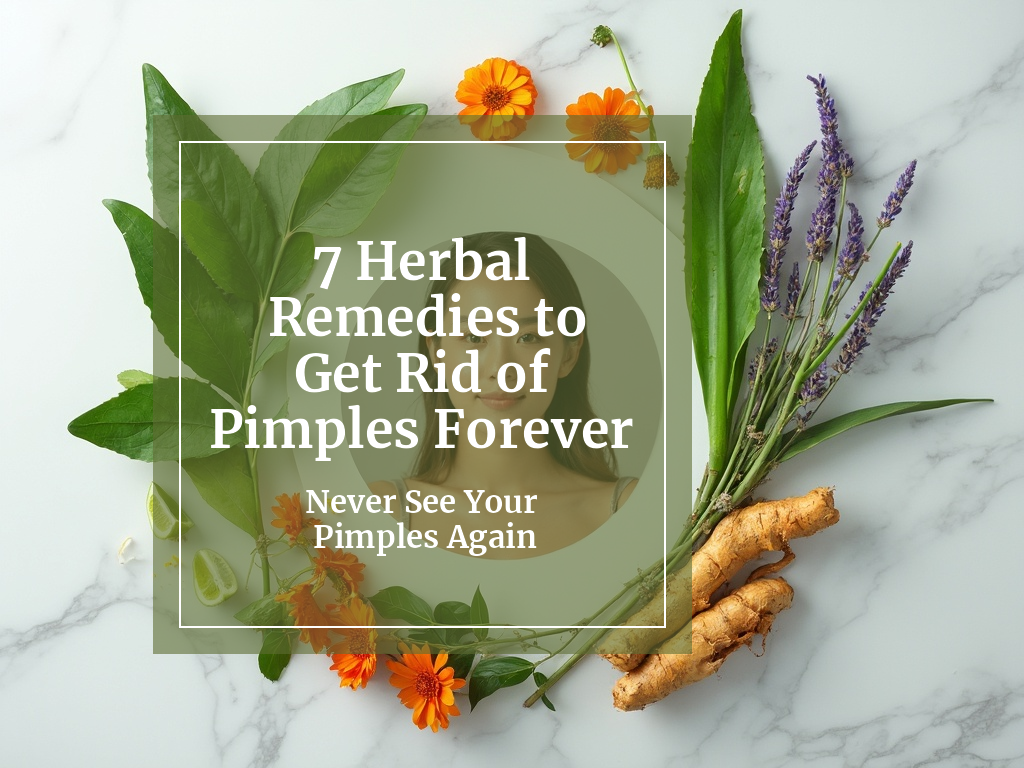
Table of Contents
Introduction
Pimples can be a persistent problem, affecting not just teenagers but adults as well. While conventional treatments are readily available, many people are turning to natural remedies for a gentler, more holistic approach to skincare. Herbal remedies have been used for centuries to treat various skin conditions, including acne, and their effectiveness is increasingly supported by scientific research.
In this comprehensive guide, we’ll explore seven powerful herbal remedies that can help you get rid of pimples and achieve clearer, healthier skin. These natural solutions offer an alternative to harsh chemicals and can be particularly beneficial for those with sensitive skin or those seeking a more eco-friendly skincare routine.
As we delve into these herbal remedies, it’s important to note that a holistic approach to skincare often involves more than just topical treatments. Diet, lifestyle, and overall health play crucial roles in maintaining clear skin. This is where the principles of naturopathy come into play. Naturopathy Practitioner courses can provide valuable insights into how natural remedies and holistic health practices can contribute to better skin and overall well-being.
Let’s explore these seven herbal remedies and learn how they can help you achieve the clear, radiant skin you’ve always wanted.
1. Tea Tree Oil: Nature’s Antiseptic
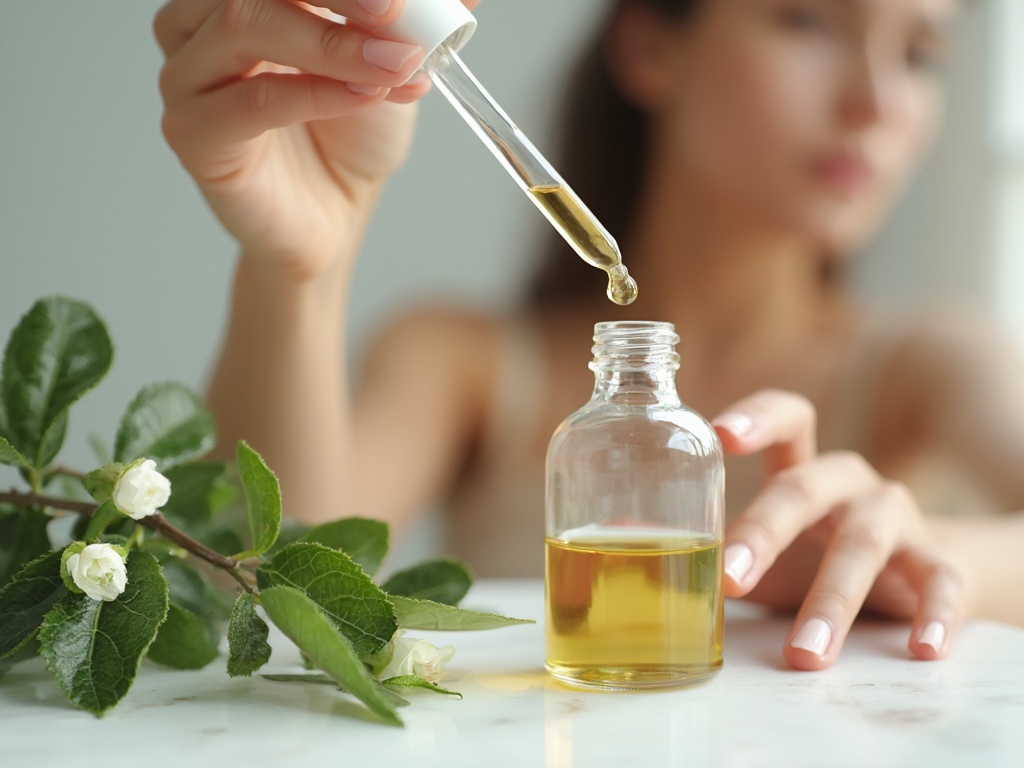
Time Required: 5-10 minutes daily
Materials Needed: Tea tree oil, carrier oil (e.g., jojoba or coconut oil), cotton swabs
Tea tree oil, derived from the leaves of Melaleuca alternifolia, is renowned for its powerful antiseptic and anti-inflammatory properties. This makes it an excellent natural remedy for treating pimples and acne. A study published in the Journal of Inflammation Research found that tea tree oil effectively reduces acne lesions and improves overall skin condition.
To use tea tree oil for pimples:
- Dilute tea tree oil with a carrier oil (1 drop of tea tree oil to 9 drops of carrier oil).
- Apply the mixture directly to the affected area using a cotton swab.
- Leave it on for a few hours or overnight.
- Rinse off with lukewarm water.
It’s crucial to dilute tea tree oil, as it can be too harsh when used undiluted on the skin. Regular use can help reduce inflammation, kill bacteria, and promote healing of existing pimples.
Benefits:
- Powerful antibacterial properties help fight acne-causing bacteria
- Reduces inflammation and redness associated with pimples
- Can help prevent future breakouts when used regularly
- Natural alternative to chemical-based acne treatments
While using tea tree oil, it’s important to be aware of potential side effects such as skin irritation or allergic reactions in some individuals. Always perform a patch test before applying it to your face, and discontinue use if you experience any adverse reactions.
For those interested in learning more about natural skincare approaches, the beginner’s guide to naturopathy offers valuable insights into holistic health practices that complement herbal remedies for skin health.
2. Neem: The Versatile Healer
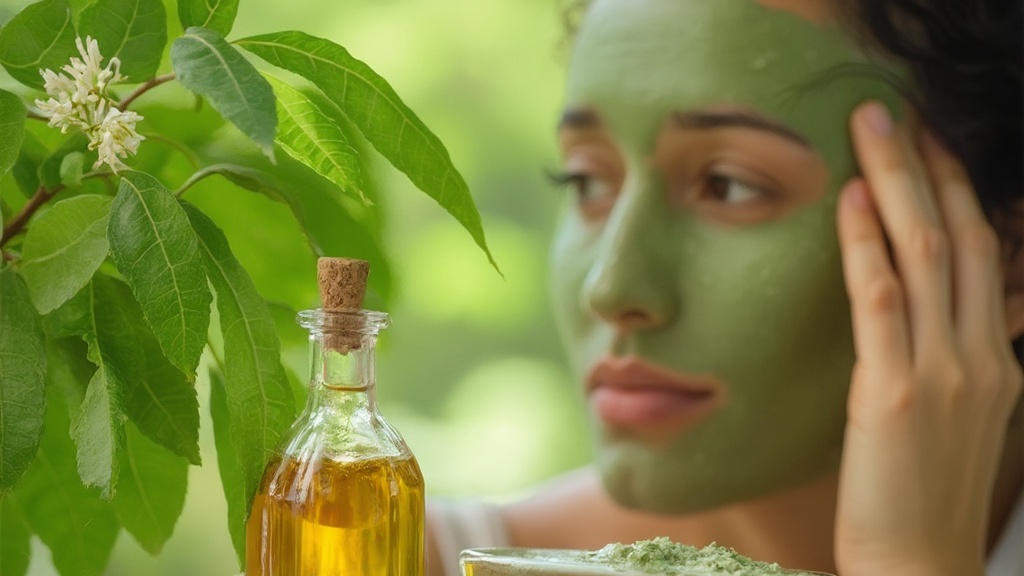
Time Required: 15-20 minutes
Materials Needed: Neem leaves or neem oil, water, mixing bowl
Neem, often referred to as the “village pharmacy” in its native India, is a powerful herb known for its antibacterial, antifungal, and anti-inflammatory properties. These qualities make it an excellent natural remedy for treating pimples and various skin conditions.
A study published in the Journal of Pharmacopuncture highlighted the effectiveness of neem-based treatments in managing acne vulgaris, demonstrating its potential as a natural acne remedy.
To use neem for pimples:
- For neem leaves: Grind fresh neem leaves into a paste with a little water.
- For neem oil: Mix a few drops of neem oil with a carrier oil like jojoba or coconut oil.
- Apply the paste or oil mixture to the affected areas.
- Leave it on for 15-20 minutes before rinsing off with cool water.
- Use this treatment 2-3 times a week for best results.
Benefits:
- Powerful antibacterial properties help combat acne-causing bacteria
- Reduces inflammation and redness associated with pimples
- Helps balance skin’s natural oil production
- Can improve overall skin texture and tone with regular use
Neem’s versatility extends beyond just treating pimples. It’s also known for its ability to soothe other skin conditions and promote overall skin health. This aligns well with the holistic approach of naturopathy, which focuses on treating the whole person rather than just symptoms.
For those interested in exploring more natural treatments for various health conditions, including skin issues, the article on 10 naturopathic treatments for specific health conditions provides valuable insights into the broader applications of natural remedies.
While neem is generally safe for most people, it’s important to do a patch test before applying it to your face, especially if you have sensitive skin. If you experience any irritation or allergic reaction, discontinue use immediately and consult a healthcare professional.
3. Aloe Vera: Soothing and Healing
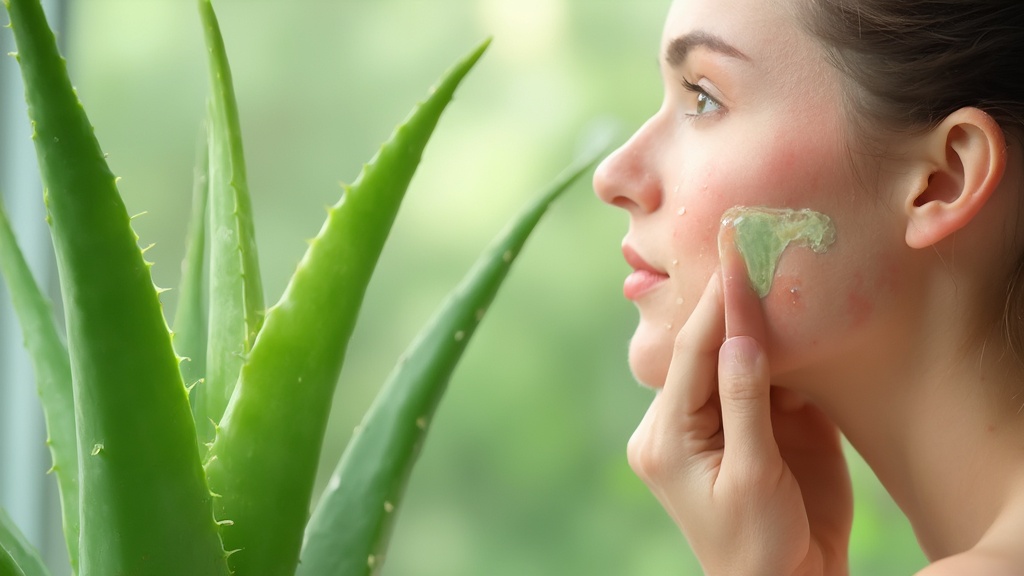
Time Required: 10-15 minutes
Materials Needed: Fresh aloe vera leaf or pure aloe vera gel
Aloe vera has been used for centuries as a natural remedy for various skin conditions, including acne. Its gel contains compounds with anti-inflammatory, antibacterial, and wound-healing properties, making it an excellent choice for treating pimples and promoting overall skin health.
A study published in the Journal of Dermatological Treatment found that aloe vera gel, when combined with other plant extracts, was effective in reducing acne lesions and improving skin condition.
To use aloe vera for pimples:
- If using a fresh aloe leaf, cut it open and scoop out the gel.
- Apply a thin layer of aloe vera gel directly to the affected areas.
- Leave it on for 15-20 minutes or overnight for deeper treatment.
- Rinse off with cool water and pat dry.
- Use this treatment daily for best results.
Benefits:
- Soothes inflammation and redness associated with pimples
- Provides hydration without clogging pores
- Promotes healing of existing acne lesions
- Can help reduce the appearance of acne scars over time
Aloe vera’s gentle nature makes it suitable for most skin types, including sensitive skin. Its ability to hydrate without adding excess oil makes it particularly beneficial for those with oily or combination skin prone to acne.
The use of aloe vera in skincare aligns well with naturopathic principles of using natural, plant-based remedies to support the body’s healing processes. For those interested in learning more about the holistic approach to skincare and overall health, the article on naturopathy principles, practices, and benefits provides valuable insights.
While aloe vera is generally safe, some people may experience allergic reactions. Always perform a patch test before applying it to your face, and if you experience any irritation, discontinue use and consult a healthcare professional.
4. Witch Hazel: Astringent Wonder
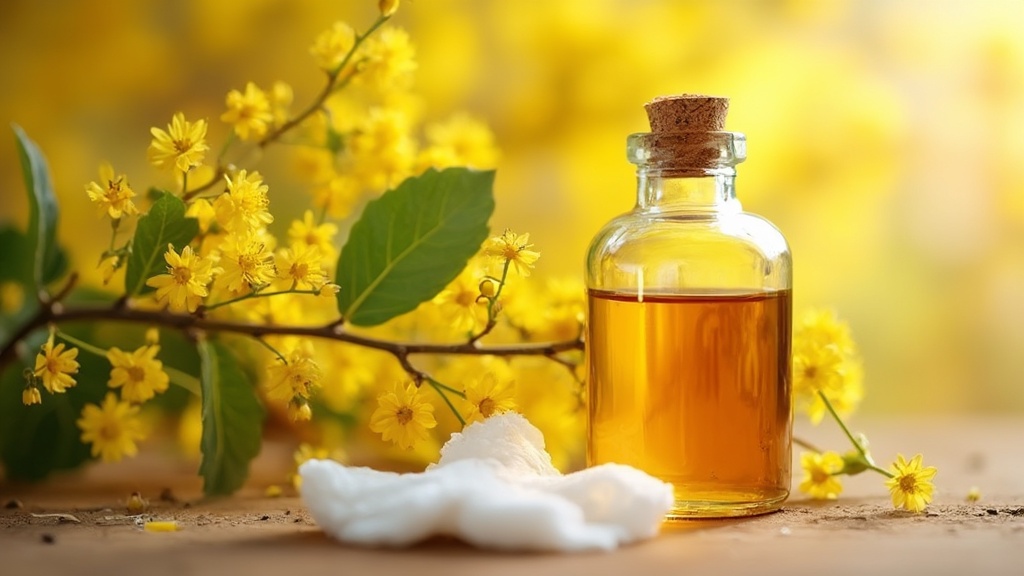
Time Required: 5-10 minutes
Materials Needed: Witch hazel extract, cotton pads
Witch hazel, derived from the bark and leaves of the witch hazel shrub, is a natural astringent that has been used for centuries in skincare. Its tannins and polyphenols make it effective in treating various skin conditions, including acne and pimples.
Research published in the Journal of Clinical and Aesthetic Dermatology has shown that witch hazel can help reduce inflammation, tighten pores, and remove excess oil from the skin, all of which are beneficial in managing acne.
To use witch hazel for pimples:
- Cleanse your face with a gentle, non-comedogenic cleanser.
- Soak a cotton pad with witch hazel extract.
- Gently apply the soaked pad to the affected areas or all over the face.
- Allow it to air dry (do not rinse off).
- Follow with a light, oil-free moisturizer if needed.
- Use once or twice daily, depending on your skin’s tolerance.
Benefits:
- Acts as a natural astringent, helping to tighten pores
- Reduces excess oil production, which can contribute to acne
- Has anti-inflammatory properties that can soothe irritated skin
- Can help prevent and treat mild acne when used regularly
Witch hazel’s ability to balance the skin’s natural oils without over-drying makes it an excellent choice for those with oily or combination skin. Its natural properties align well with the naturopathic approach to skincare, which emphasizes using gentle, plant-based remedies to support the body’s natural healing processes.
For those interested in exploring more natural approaches to skincare and overall health, the introduction to naturopathy course offers valuable insights into holistic health practices that complement herbal remedies for skin health.
While witch hazel is generally well-tolerated, it can be drying for some skin types. If you have dry or sensitive skin, start with less frequent applications and monitor your skin’s response. As always, perform a patch test before applying it to your face, and discontinue use if you experience any irritation.
5. Calendula: Gentle Inflammation Fighter
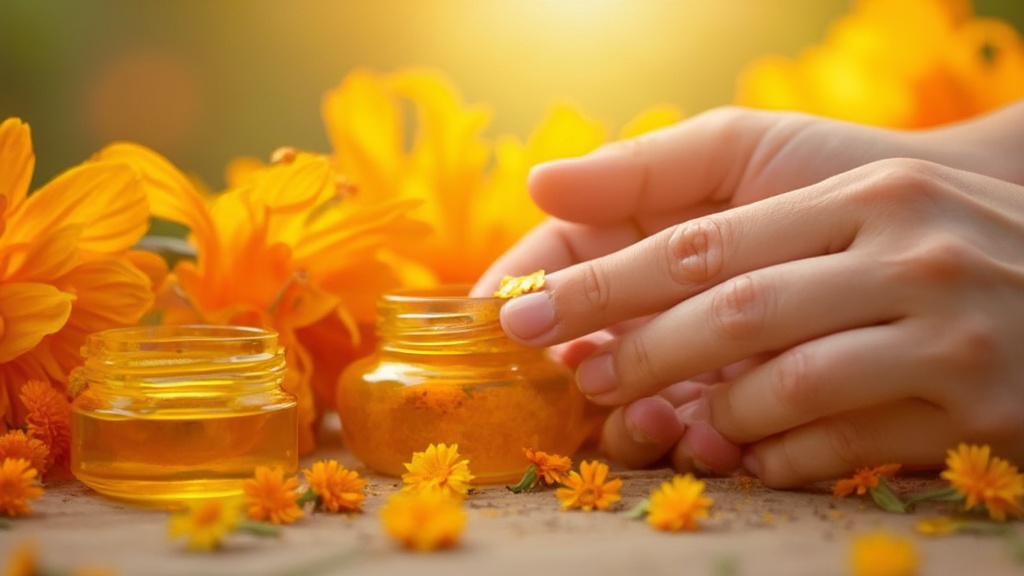
Time Required: 10-15 minutes
Materials Needed: Calendula-infused oil or cream, or dried calendula flowers for making a tea
Calendula, also known as pot marigold, has been used for centuries in traditional medicine for its healing properties. Its anti-inflammatory and antimicrobial qualities make it an excellent natural remedy for treating pimples and promoting overall skin health.
A study published in the Journal of Clinical and Experimental Dermatology Research found that calendula extract significantly reduced inflammation and promoted wound healing in skin conditions, including acne.
To use calendula for pimples:
- For calendula-infused oil or cream: Apply a small amount directly to the affected areas.
- For a calendula tea compress: Steep dried calendula flowers in hot water, let cool, then apply the tea to your face using a clean cloth.
- Leave the treatment on for 15-20 minutes.
- Rinse with cool water if using the tea compress.
- Use once or twice daily for best results.
Benefits:
- Reduces inflammation and redness associated with pimples
- Promotes healing of existing acne lesions
- Gentle enough for sensitive skin
- Can help improve overall skin texture and tone
Calendula’s gentle nature makes it suitable for all skin types, including sensitive and acne-prone skin. Its ability to soothe inflammation while promoting healing aligns well with the naturopathic approach to skincare, which focuses on supporting the body’s natural healing processes.
For those interested in learning more about natural approaches to skincare and overall health, the naturopathy vs conventional medicine comparison provides valuable insights into how these different approaches can complement each other in treating skin conditions.
While calendula is generally safe for topical use, it’s always wise to perform a patch test before applying it to your face, especially if you have known allergies to plants in the daisy family. If you experience any irritation, discontinue use and consult a healthcare professional.
6. Lavender: Calming and Clarifying

Time Required: 5-10 minutes
Materials Needed: Lavender essential oil, carrier oil (e.g., jojoba or sweet almond oil)
Lavender is renowned for its calming scent and skin-soothing properties. Its antimicrobial and anti-inflammatory qualities make it an effective natural remedy for treating pimples and promoting overall skin health.
Research published in the Journal of Clinical and Aesthetic Dermatology has shown that lavender oil can help reduce acne lesions and improve overall skin condition when used in combination with other natural ingredients.
To use lavender for pimples:
- Dilute lavender essential oil with a carrier oil (2-3 drops of lavender oil per teaspoon of carrier oil).
- Apply the mixture directly to the affected areas using clean fingertips or a cotton swab.
- Gently massage the oil into the skin.
- Leave it on overnight or for at least 30 minutes before rinsing.
- Use this treatment once daily, preferably before bed.
Benefits:
- Antimicrobial properties help fight acne-causing bacteria
- Reduces inflammation and redness associated with pimples
- Calming scent can help reduce stress, which may contribute to acne
- Can help balance skin’s natural oil production
Lavender’s versatility extends beyond just treating pimples. Its calming properties can help reduce stress and promote better sleep, both of which can contribute to healthier skin. This holistic approach to skincare aligns well with naturopathic principles, which emphasize treating the whole person rather than just symptoms.
For those interested in exploring more natural approaches to health and wellness, including stress management and sleep improvement, the naturopathy practitioner training course in two installments offers comprehensive insights into holistic health practices.
While lavender is generally safe for most people, it’s important to dilute essential oils properly before applying them to the skin. Always perform a patch test before using lavender oil on your face, and discontinue use if you experience any irritation or allergic reactions.
7. Turmeric: Golden Spice for Clear Skin
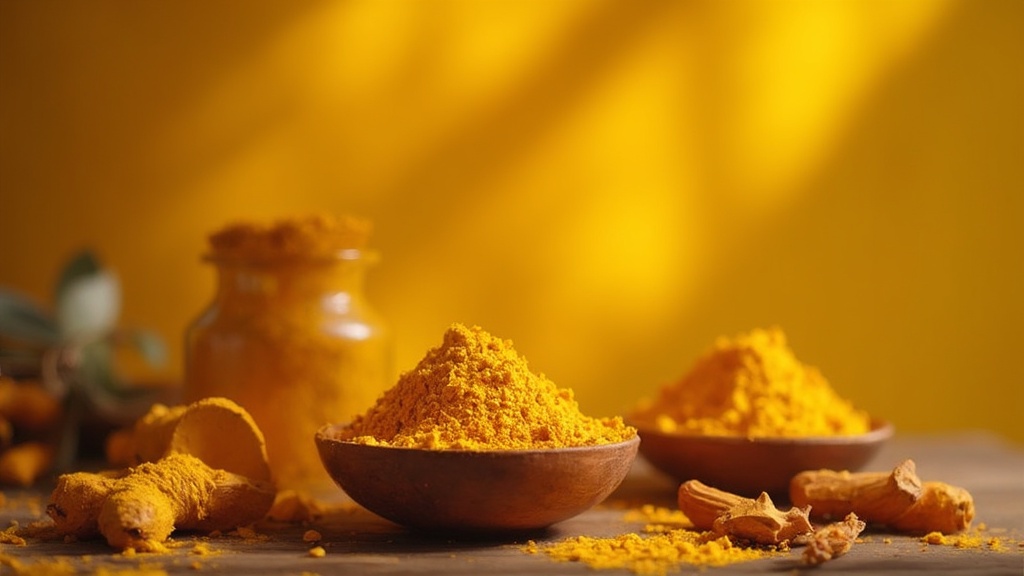
Time Required: 15-20 minutes
Materials Needed: Ground turmeric powder, water or plain yogurt, honey (optional)
Turmeric, a golden spice used in cooking and traditional medicine, has powerful anti-inflammatory and antioxidant properties that make it an excellent natural remedy for treating pimples and promoting overall skin health.
A study published in the Journal of Medicinal Plants Studies found that turmeric’s active compound, curcumin, has significant anti-inflammatory and antimicrobial effects, making it effective in treating various skin conditions, including acne.
To use turmeric for pimples:
- Mix 1 teaspoon of ground turmeric with enough water or plain yogurt to form a paste.
- Add a small amount of honey if desired for extra antibacterial benefits.
- Apply the paste to the affected areas or as a full face mask.
- Leave it on for 15-20 minutes.
- Rinse off with lukewarm water and pat dry.
- Use this treatment 2-3 times a week for best results.
Benefits:
- Powerful anti-inflammatory properties help reduce redness and swelling
- Antioxidants in turmeric can help protect skin from free radical damage
- Antimicrobial effects may help fight acne-causing bacteria
- Can help even out skin tone and reduce the appearance of acne scars over time
Turmeric’s ability to address multiple aspects of skin health makes it a valuable addition to any natural skincare routine. Its use in traditional medicine systems like Ayurveda aligns well with naturopathic principles, which emphasize the use of natural remedies to support the body’s healing processes.
For those interested in learning more about how natural remedies like turmeric fit into a broader approach to health and wellness, the article on integrating naturopathy with conventional medicine provides valuable insights into combining different healing modalities.
While turmeric is generally safe for topical use, it can stain the skin yellow temporarily. This staining usually fades within a day or two. As with any new skincare treatment, it’s important to do a patch test before applying turmeric to your face, especially if you have sensitive skin. If you experience any irritation, discontinue use and consult a healthcare professional.
Conclusion
Incorporating these seven herbal remedies into your skincare routine can provide a natural, effective way to combat pimples and promote overall skin health. Each of these remedies offers unique benefits, from the antiseptic properties of tea tree oil to the soothing effects of aloe vera and the anti-inflammatory power of turmeric.
Remember that consistency is key when using natural remedies. It may take some time to see significant results, so be patient and persistent in your skincare routine. Also, keep in mind that what works for one person may not work for another, so don’t be afraid to experiment and find the combination of remedies that works best for your skin.
While these herbal remedies can be highly effective, it’s important to approach skincare holistically. A balanced diet, proper hydration, stress management, and adequate sleep all play crucial roles in maintaining healthy skin. This comprehensive approach to health and wellness is at the core of naturopathic medicine.
For those interested in delving deeper into natural health practices and learning how to integrate these principles into their daily lives, consider exploring naturopathy courses. The naturopathy practitioner certification course in three installments offers a comprehensive education in natural healing methods, including herbal remedies and holistic skincare approaches.
By combining the power of these herbal remedies with a holistic approach to health, you can work towards achieving clear, radiant skin naturally. Remember to always listen to your body, and consult with a healthcare professional if you have persistent skin issues or concerns.
Explore More
- What Can You Do with a Naturopathy Certification?
- 7 Reasons to Become a Naturopathic Practitioner
- Dispelling Myths: Naturopathy is Not Pseudoscience, It is Evidence-Based Healing
- Understanding Differences Between Naturopathy Practitioner and Naturopathic Doctor
- Uncover the Core Principles of Naturopathy
- Naturopathic Medicine in Women’s Health
- Getting Natural Relief from Pain Through Naturopathy

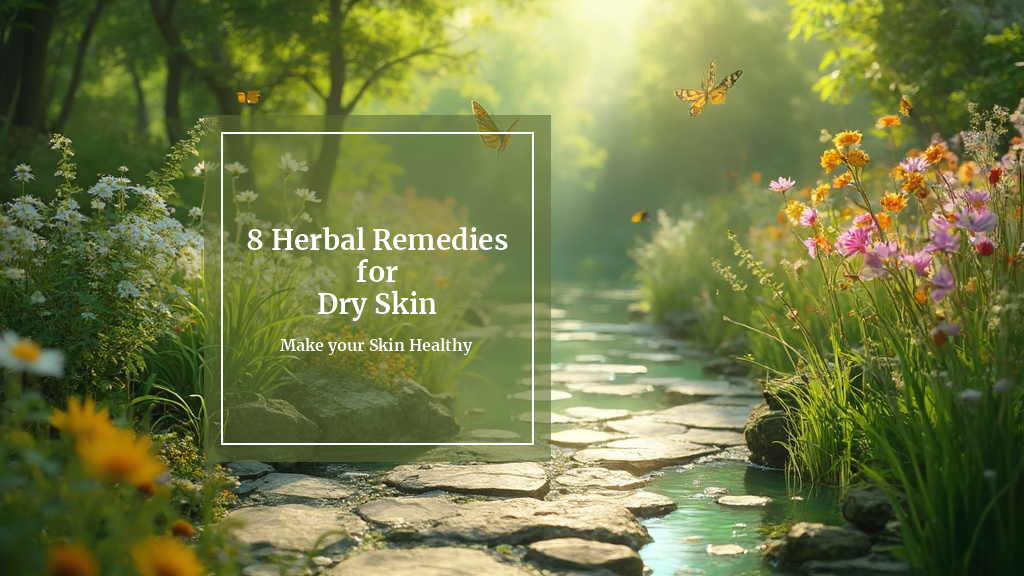
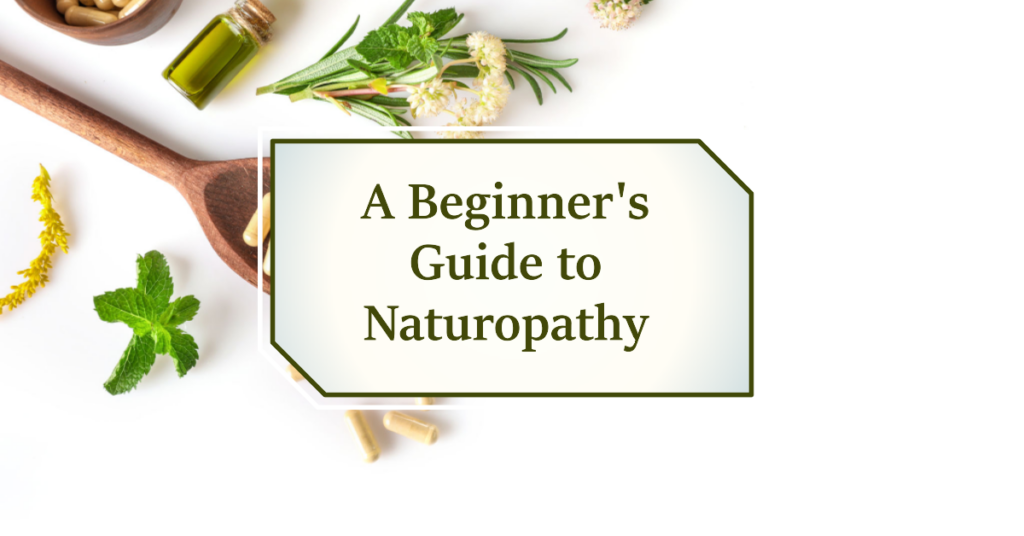
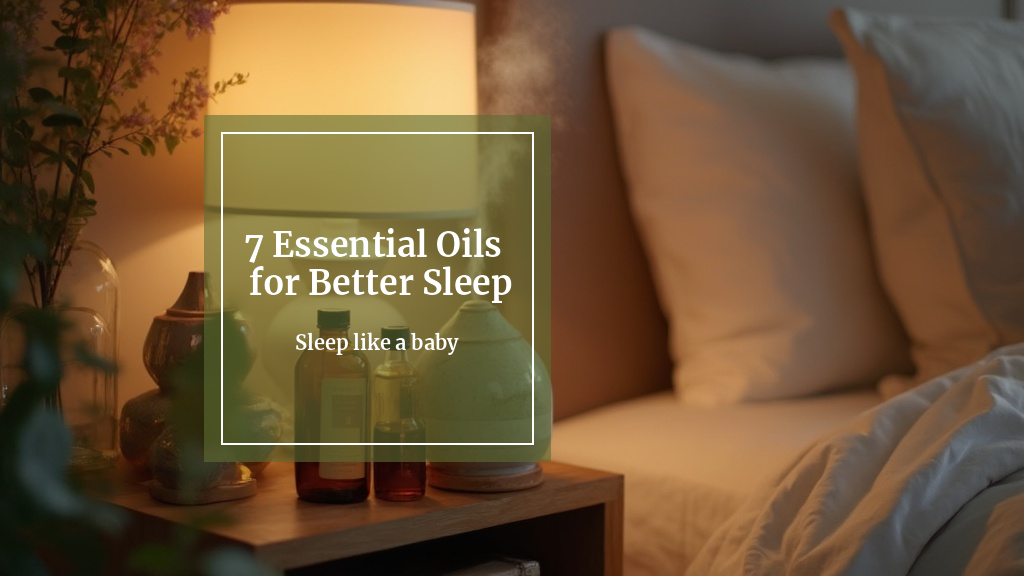

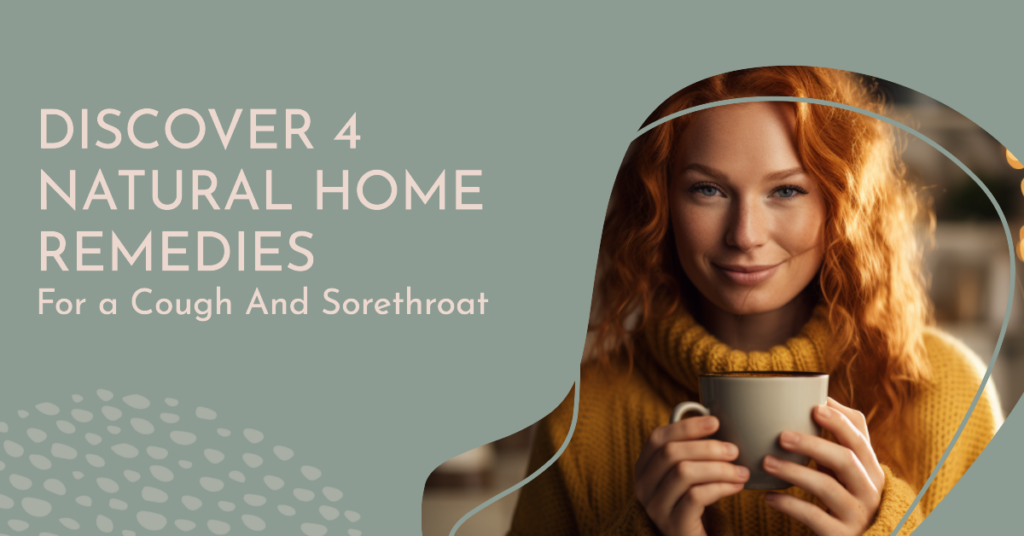




Responses